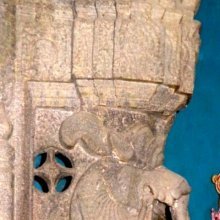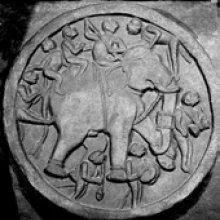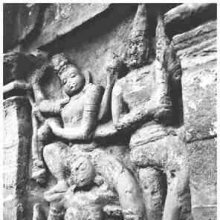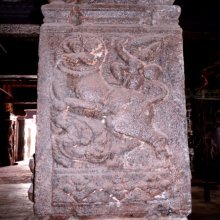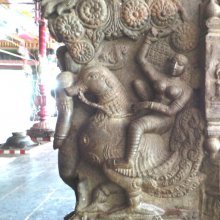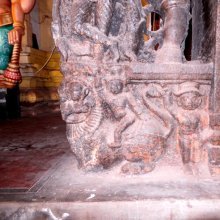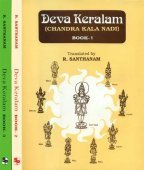Riding: 1 definition
Introduction:
Riding means something in the history of ancient India. If you want to know the exact meaning, history, etymology or English translation of this term then check out the descriptions on this page. Add your comment or reference to a book if you want to contribute to this summary article.
Images (photo gallery)
(+26 more images available)
India history and geography
Source: Singhi Jain Series: Ratnaprabha-suri’s Kuvalayamala-katha (history)Riding (on a horse) represents a scene of human life commonly depicted on the Saṃsāracakra paintings in ancient India, as mentioned in the Kathās (narrative poems) such as Uddyotanasūri in his 8th-century Kuvalayamālā (a Prakrit Campū, similar to Kāvya poetry).—Page 185.21 f.: Here follows a description of a printed scroll illustrating the Jaina conception of saṃsāracakra. [...] The saṃsāra-cakra illustrated the three worlds of hell, human world and the world of gods. [For example:] The figure of a king riding on a horse and going for hunting; then the various animals trembling for fear of impending death; then a crowd of people making noise to bring the animals together, i.e., engaged in what is now known as hāṅkā;

The history of India traces the identification of countries, villages, towns and other regions of India, as well as mythology, zoology, royal dynasties, rulers, tribes, local festivities and traditions and regional languages. Ancient India enjoyed religious freedom and encourages the path of Dharma, a concept common to Buddhism, Hinduism, and Jainism.
See also (Relevant definitions)
Full-text (+447): Rohaka, Saratha, Hayaroha, Nagarudha, Shadi, Aupavahya, Prishthayana, Vararoha, Sadyas, Ashrvashala, Sarathin, Gajarudha, Samaroha, Prishthya, Ashvacalanashala, Prishthaga, Palakhipadastha, Yanayana, Vahana, Satavahana.
Relevant text
Search found 175 books and stories containing Riding; (plurals include: Ridings). You can also click to the full overview containing English textual excerpts. Below are direct links for the most relevant articles:
Garga Samhita (English) (by Danavir Goswami)
Verse 1.12.44 < [Chapter 12 - Description of Śrī Nanda’s Festival]
Verse 1.12.42 < [Chapter 12 - Description of Śrī Nanda’s Festival]
Verse 1.12.45 < [Chapter 12 - Description of Śrī Nanda’s Festival]
Manusmriti with the Commentary of Medhatithi (by Ganganatha Jha)
Verse 4.72 < [Section IX - Personal Cleanliness]
Verse 2.204 < [Section XXX - Rules to be observed by the Religious Student]
Verse 11.201 < [Section XXVI - Expiation for riding a Camel and other similar Offences]
Matangalila and Hastyayurveda (study) (by Chandrima Das)
Influence on foreign countries < [Chapter 5]
Airāvata (vehicle of the King of Gods—Indra) < [Chapter 4]
The gaja-śārdula concept < [Chapter 2]
Srila Gurudeva (The Supreme Treasure) (by Swami Bhaktivedanta Madhava Maharaja)
Horse Riding < [Chapter 1.2 - Śrīla Gurudeva’s Pūrvāśrama]
Chapter 1 - The Bhagavad-gita < [Bhisma Parva]
Chapter 1 - The Sixteenth Day of Hostilities < [Karna Parva]
Chapter 2 - The Twelfth Day at Kurukshetra; The Fall of King Bhagadatta < [Drona Parva]
Animal Kingdom (Tiryak) in Epics (by Saranya P.S)
Related products
